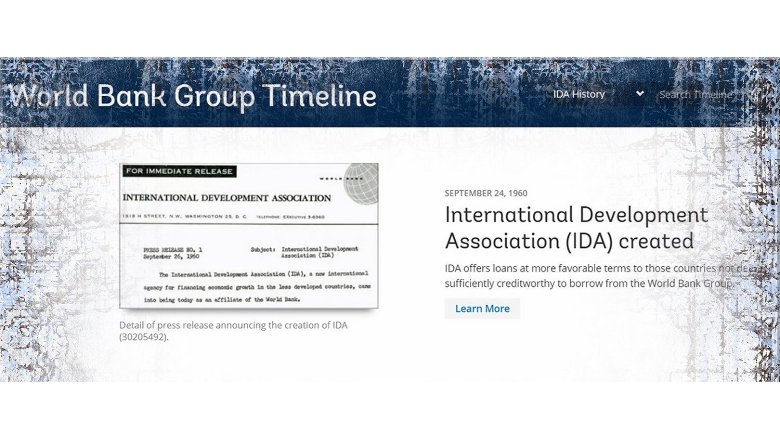The International Bank for Reconstruction and Development (IBRD), better known as the World Bank, was established in 1944 to help Europe recover from the devastation of World War II. The success of that enterprise led the Bank, within a few years, to turn its attention to the developing countries. By the 1950s, it became clear that the poorest developing countries needed softer terms than those that could be offered by the Bank, so they could afford to borrow the capital they needed to grow.
As early as 1949, a report from the United Nations (U.N.) proposed a new international organization called the United Nations Economic Development Administration (UNEDA) under the auspices of the U.N. In the 1950s, the U.S. government-supported establishing a program to lend to poor countries on concessional terms with the backing of multilateral donors. After initial deliberations, the idea to create the International Development Association (IDA), an agency to provide ‘soft-loans’ to developing countries, was floated within the Bank under the stewardship of President Eugene Black.
(Explore IDA's history in a timeline developed with the World Bank Group Archives. Through 87 events and nearly 500 archival and informational sources, the timeline explores the origins of IDA, its vital role in providing financial and knowledge resources, and the innovative ways it has supported economic and social development across the poorest countries in the world.)
Monroney Resolution
Articles of Agreement for IDA
Before the end of January 1960, the Bank had circulated the Articles of Agreement to all of the members for ratification, and received approval from member countries including the U.S. under President Dwight D. Eisenhower.
Launch of IDA
IDA has grown to include 174 member countries, and has become the leading source of concessional lending to 75 of the world’s poorest countries. Overall, 36 countries have graduated from IDA. Since its inception, IDA credits and grants have totaled $533 billion, averaging $36 billion over the last three years (FY21-FY23).
Last Updated: Sep 12, 2023





